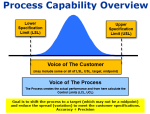Project Pitfalls
Common project pitfalls to avoid before and during a Six Sigma project. You will likely encounter one or many of these as a Six Sigma project manager.
Be prepared to respond and overcome (or avoid) them.
Natural Resistance
The employees of many companies have heard of all the buzzwords and programs at least once in their career. Too often, when many hear of the words Kaizen, Lean Manufacturing, Continuous Improvement, Six Sigma, they may chuckle and internally think their jobs are at risk of being eliminated or we have "been there - done that".
These reputations come from real experiences and avoiding all these pitfalls can help strengthen your company's Six Sigma program reputation. But this attention to prevent these pitfalls starts with the proper rollout of the program.
When a company decides to implement such a program, it is important to do the homework up front, put the painful time and research into the preparation, then execute swiftly. In any implementation case, the rollout will not be perfect and the methods that works from company to company will vary.
Start with your most proven and qualified Project Managers that is well respected in the company and more of people-person than a numbers-person. The numbers can be taught and learned later, leading people effectively can't always be taught.
Find a process that is ripe for opportunity to improve, has manageable scope, and will garner high visibility among all employees. Start with a limited scope and minimize the risks of these pitfalls.
Finally, perform project post-mortems, track the lessons, review what went well and what did not, look for symptoms of these pitfalls and squash them before they further develop.
There is no "I" in "TEAM"
As a Six Sigma Project Manager, learn about your team members, their history, work background, and be sensitive to their personal side. Try to understand their hot buttons and also what motivates them. From this, crafting messages and delivering elevator speeches tailored to this research can become more valuable.
Give credit to the TEAM for their success.
Scope Creep
The project extended beyond the original defined parameters and became unmanageable. Teams will get ambitious and seek perfection. They may try to tackle everything at once. Set a manageable scope, achieve the goals, celebrate it, close it out and write a new contract if needed to get the next level towards perfection. Stick to the scope defined in the project contract.
Overcommitted Financials
Most GB's and BB's seek to impress especially if it is their first project. As a result hard and soft savings are sometimes over estimated or projected to start earlier than possible. More projects are focused on soft savings such as items that are difficult to quantify and difficult to be perceived as improved by the company and upper management. Examples are customer quality, any type of risk reductions, delivery improvements, improved customer loyalty.
This is probably one of the leading inputs that results in a diminishing GB/BB reputation as well as the company's program itself. To prevent premature savings commitments or erroneous commitments companies should clearly define the policies and procedures to calculate hard and soft savings. The best advice for a GB/BB is to have a finance professional validate projected savings and actual savings as they occur during and after a project is closed.
Project Complexity
There may have been a previous company problem that went unresolved or a problem that is well beyond a team's jurisdiction. It has resurfaced with the thought that a Six Sigma team can automatically fix it. The project is destined for failure before it starts. The credibility of both the GB/BB and the company's Six Sigma program are compromised.
Lack of Support
It starts with Upper Management, then the Champion, Green Belt, or Black Belt. The Champion has the delicate role of ensuring support without getting overly involved in team activity. Lack of support means failing to provide time, people, equipment, money, or leadership.
Upper Management must walk the talk; actions will speak louder than words. The culture required for Six Sigma to succeed can not be faked, it needs to be in the values of the leadership team and embraced within everything they do.
Lack of Project Interest
The project needs to invoke interest and show correlation to the team members' needs. Use a Stakeholder Analysis tool early and throughout the project to determine the team assessment.
Lost Control
The last phase of a DMAIC project is often rushed in order to close a project and get someone credit. This leads to a process/service change that has not been controlled and eventually any measured improvement will unwind. This will also damage the credibility of the GB/BB, the team members, and the Six Sigma program.
Sustaining the gains of any project whether it is at home or work is the most challenging and often most underestimated.
No Problem
The project does not require the problem solving methodology. Some problems can clearly be answered, or are low hanging fruit that just need to be resolved.
Paralysis from Analysis
This term is used for those project managers that love to display numbers and proceed solely on data. Sometimes this takes away from the team's expertise and input to provide the hidden factory elements. Team participants take pride in sharing their knowledge. Moreover, some of the tools are subjective so allow them to relay their valuable information to you and the rest of them members.
Crunching numbers, data cleansing, looking for the perfect MSA, and running statistical tests are potential traps to stall projects. Guiding the team through data analysis is preferred but don't overdo it or let it interfere with momentum. The project isn't about YOU so impressing the team with charts and figures isn't a priority.
People don't care about how much you know until they know how much you care...about them. Focus on them as individuals and they will listen to your message, and your data, more effectively.
Un-Qualified Green Belt/Black Belt
Companies invest significant resources into developing Lean and Six Sigma leaders and expects them to quickly deliver results to the bottom line. Six Sigma is not for everyone, some will not suit the role and some will not grasp the material.
Others will become subject matter experts but fail to have the people skills and "change" vigor needed to achieve breakthroughs and paradigm shifts. Every project requires a qualified manager and the tools within this site can help but experience is the most valuable.
It is also important for the GB/BB selection process from Upper Management to be robust and for the individuals that are selected to take it upon themselves to be aggressive, learn, network, and apply the work.
Software Glitch - operator failure
As a Six Sigma Project Manager, there will be a lot of time spent within a statistical software program and likely Excel. Do your homework in advance and learn the basic functions of organizing data, looking for errors, creating Pareto Diagrams, checking normality, and other functions that you will use repeatedly. You can make up random data if necessary to practice running hypothesis tests and other basic statistical evaluations.
Go through the menus, options, and READ the help menu. First, learn how to make the most of it. This is also an excellent way to learn about statistics. You will probably find yourself pausing to absorb some of the material along the way.
But don't get carried away and suffer from another earlier pitfall...Paralysis from Analysis.
What makes an ideal DMAIC Six Sigma project?
Some projects simply needed to be discovered and solution is already known. These are usually small in scope and are projects to just go and execute - don't waste time trying to shoehorn it into a DMAIC project and tying up resources.
Other projects can be handled with a Kaizen Blitz or a 5S event. The Master Black Belt (MBB) should make the decision on how to handle the opportunities.
The following criteria generally constitute a good DMAIC Six Sigma project:
- Problem exist with no clear solution
- Root causes not fully understood
- Opportunity to improve customer satisfaction
- Material cost savings as defined by company
- Aligns with company goals, mission, and vision
- Complexity in the process
- Data is available or reasonable to obtain
- There must be an existing process
- If a BB project, generally needs to be achievable in 3-6 months
- If a GB project, generally needs to be achievable in 1-3 months
Proceed to module on Project Management
Test your knowledge with sample certification problems
Return to the Six-Sigma-Material Home Page
Recent Articles
-
Process Capability Indices
Oct 18, 21 09:32 AM
Determing the process capability indices, Pp, Ppk, Cp, Cpk, Cpm -
Six Sigma Calculator, Statistics Tables, and Six Sigma Templates
Sep 14, 21 09:19 AM
Six Sigma Calculators, Statistics Tables, and Six Sigma Templates to make your job easier as a Six Sigma Project Manager -
Six Sigma Templates, Statistics Tables, and Six Sigma Calculators
Aug 16, 21 01:25 PM
Six Sigma Templates, Tables, and Calculators. MTBF, MTTR, A3, EOQ, 5S, 5 WHY, DPMO, FMEA, SIPOC, RTY, DMAIC Contract, OEE, Value Stream Map, Pugh Matrix
Site Membership
Click for a Password
to access entire site
Six Sigma
Templates & Calculators
Six Sigma Modules
The following are available
Click Here
Green Belt Program (1,000+ Slides)
Basic Statistics
Cost of Quality
SPC
Process Mapping
Capability Studies
MSA
Cause & Effect Matrix
FMEA
Multivariate Analysis
Central Limit Theorem
Confidence Intervals
Hypothesis Testing
T Tests
1-Way ANOVA
Chi-Square
Correlation and Regression
Control Plan
Kaizen
MTBF and MTTR
Project Pitfalls
Error Proofing
Effective Meetings
OEE
Takt Time
Line Balancing
Practice Exam
... and more




